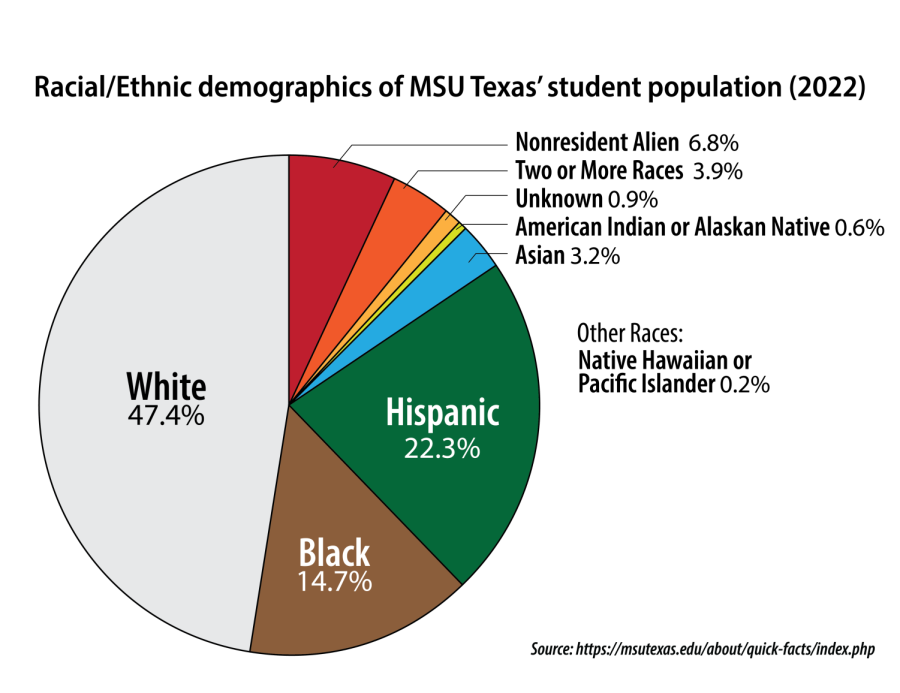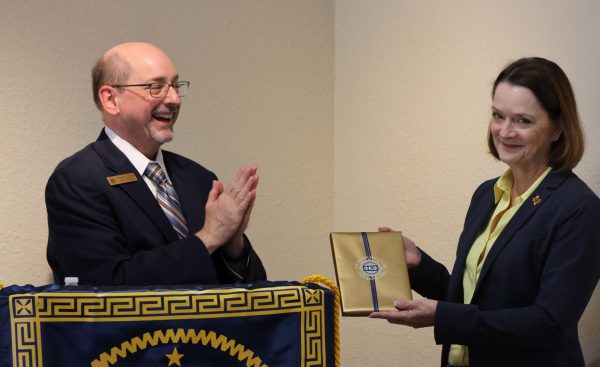Enrollment at MSU
Enrollment numbers play a big part in campus decisions, not just at MSU but at any academic institution. Therefore, any changes in those numbers will result in concerns among students and faculty. With some rumors of declining student population at MSU, the Office of Enrollment Management and the Office of the President commented on recent changes.
“As of this writing, compared to spring of 2021, we are considered flat in terms of enrollment. We are currently down approximately 30 students when compared to the spring of 2021, which is about half of a percent. Typically, less than a 1 percent swing up or down is considered flat. We have seen some really positive gains in dual credit enrollment, graduate enrollment, and freshmen retention. Our retention of freshmen from fall to spring was up 4%. This is really encouraging. There is no doubt that our recent enrollment declines have been a result of the pandemic and students holding off college,” Frederic Dietz, vice president of enrollment management, said.
MSU interim president James Johnston discussed enrollment changes over time. He said that student applications and retention are rising.

“We started at I think it was 5,797 so about 5,800. Historically from fall to spring, you lose some students, we just refer to it as a melt…This year we…worked really hard to both support our students and help them move forward. We gained some ground, our retention rate is up 4% over last year…In fall and spring, you enroll some new students, but you have to hold on to the ones that you have here and help them be successful. [We] gained a little ground in that, which is what I wanted to do and fall is looking particularly strong. We compare day to day, so we’ll compare February 16 of ‘21 with February 16 of ‘22 and just kind of see how we’re trending. Any given day we’re trending between 20 and 25% more applications and admitted students than last year,” Johnston said.
Enrollment declines and increases are experienced by many universities and are usually managed through target-based strategies and tactics. The administrative staff detailed attempts to maintain enrollment with strategies like the renovation of Bolin Hall to attract more students to the sciences and campaigning of the music department’s Red River Valley project to high schools across Texas.
“I have appointed a campus-wide enrollment and retention task force at the end of September and this is across campus. It’s everybody being a part of I think there’s 60 being directly a part of the task force and a number of others that are subcommittees that are working on different pieces of it. I think people want a single solution, one lever you pull and everything gets better with enrollment in growing a university. It’s a very complex undertaking, there are a million little things that have to be done and they collectively move us forward…There’s not a single concise easy answer for you, but it’s all the little things that are starting to add up,” Johnston said.
The Office of Enrollment Management has high hopes for the Summer of 2022 and the 2022-2023 academic school year. Their hopes lie in the rise in campus tours, number of freshmen from spring of 2021 to 2022 and inflow of transfer applications for the upcoming academic year. Deitz spoke on the future of MSU and what to expect in the fall.
“The fall 2022 outlook looks very promising. Admitted freshmen applications are up 30%, we are seeing more partnerships with schools for dual credit enrollment and our retention rates are on the rise. Also, graduate enrollment remains strong and contributes greatly to our overall enrollment numbers. Additionally, international students appear to be more willing to attend college in the US despite the pandemic, so we anticipate a jump in new international enrollment as well,” Dietz said.

The effects of the enrollment decline can be felt campus-wide. As a result, decisions like shutting down Pierce Hall to conserve housing costs are being made.
“Occupancy numbers drive housing decisions and are a reflection of what’s happening with the larger enrollment profile. Like our peer institutions, we’ve seen occupancy dips related to smaller freshman classes and as a result of students choosing to live at home and commute to campus during the pandemic,” Kristi Schulte, director of residence life and housing, said. “At this moment, we currently have over 400 open spaces on campus spread throughout all of our residential areas.”






